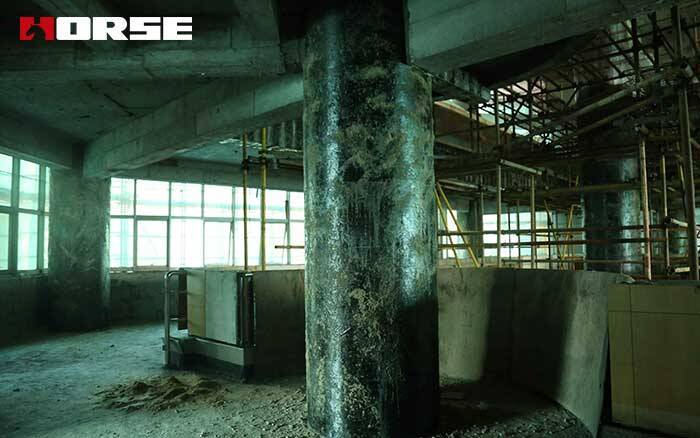Solutions
Horse Construction offers full range of structural strengthening materials with technical supports, documentation supports, products supports, project supports.
[Horse Construction Answer] Carbon fiber can be successfully used for seismic, shear and bending reinforcement of concrete structures. However, it should be pointed out that due to some inherent stress characteristics of carbon fiber reinforced structures, many concrete structural problems are not suitable for carbon fiber reinforcement, so it is necessary to analyze their applicability.
[Customer question] Applicability of carbon fiber reinforcement method?
[Horse Construction Answer] Carbon fiber can be successfully used for seismic, shear and bending reinforcement of concrete structures. However, it should be pointed out that due to some inherent stress characteristics of carbon fiber reinforced structures, many concrete structural problems are not suitable for carbon fiber reinforcement, so it is necessary to analyze their applicability.

1.Stiffness
When the concrete building and roof structure are insufficiently rigid, resulting in excessive deformation and severe cracking, which affects the use, it is not suitable to use carbon fiber cloth for reinforcement. Studies have shown that, for beams, plates and other laterally stressed members, when reinforced with carbon fibers, in the normal use limit state, the effect of carbon fibers on structural rigidity is less than 10%, or almost no improvement.
2.Scope of application of carbon fiber bending reinforcement
When the concrete structure is reinforced with carbon fiber cloth due to insufficient bending capacity, the failure form of the reinforced structure depends on the reinforcement of the original structure on the one hand and the amount of carbon fiber on the other. Now suppose that the original structure is a suitable reinforcement member, the damage forms of the reinforced structure can be divided into the following three cases.
(1)Less carbon fiber. The concrete at the edge of the compression zone was crushed during the failure, and the tensile steel bar yielded, and the carbon fiber could reach a higher tensile strain.
⑵ Moderate amount of carbon fiber. During the failure, the concrete at the edge of the compression zone is crushed, the tensile steel bar is yielded, and the carbon fiber can reach a moderate tensile strain.
(3) The amount of carbon fiber used is large. At the time of the failure, the concrete at the edge of the compression zone was crushed, the tensile steel bar yielded, and the carbon fiber strain was very low.
The above three cases, the third case is not suitable due to the large amount of carbon fiber and low strength utilization rate. The first reinforcement method is suitable for beams with a large section height. The second reinforcement method is suitable for plates or flat beams with a small section height. This is mainly because for plates or flat beams, when the carbon fiber does not reach a high tensile strain, the structure may be damaged due to excessive deformation. The specific limit depends on the ultimate tensile strain and loading method of the carbon fiber.

3.Anti-torsion problem
Concerning the torsional strengthening of concrete structures with carbon fiber materials, there is not much research done at home and abroad. From the perspective of the torsional failure mechanism of concrete structures, no matter whether the fiber direction of the carbon fiber is perpendicular to the axis or parallel to the axis, the development of torsional diagonal cracks can be restrained and a certain reinforcement effect can be achieved.
However, when carbon fiber is used for reinforcement, on the one hand, cracks have been formed and the crack distribution has been determined. On the other hand, the ultimate strain of carbon fiber can be as high as 10000με, and the strain of ordinary steel bars is less than 2000με, and it has yielded. If the strain width of the concrete is already large when the strain is increased above 4000με, it will inevitably begin to develop to other surfaces, and the structure is close to failure. At this time, the stress that the carbon fiber can reach may be low. Therefore, the effect of carbon fiber reinforced torsion members must be determined through further research.
You can find anything here you are in need of, have a trust trying on these products, you will find the big difference after that.

High strength, unidirectional carbon fiber wrap pre-saturated to form a carbon fiber reinforced polymer (CFRP) wrap used to strengthen structural concrete elements.

High strength carbon fiber reinforced polymer (CFRP) strip / laminate / plate for structural strengthening and concrete repair

Prestressed carbon fiber reinforced polymer(CFRP) plate for slab, beam strengthening to increase stiffness, reduce distortion and deflection of members, reduce the cracks, avoid and stop cracking.